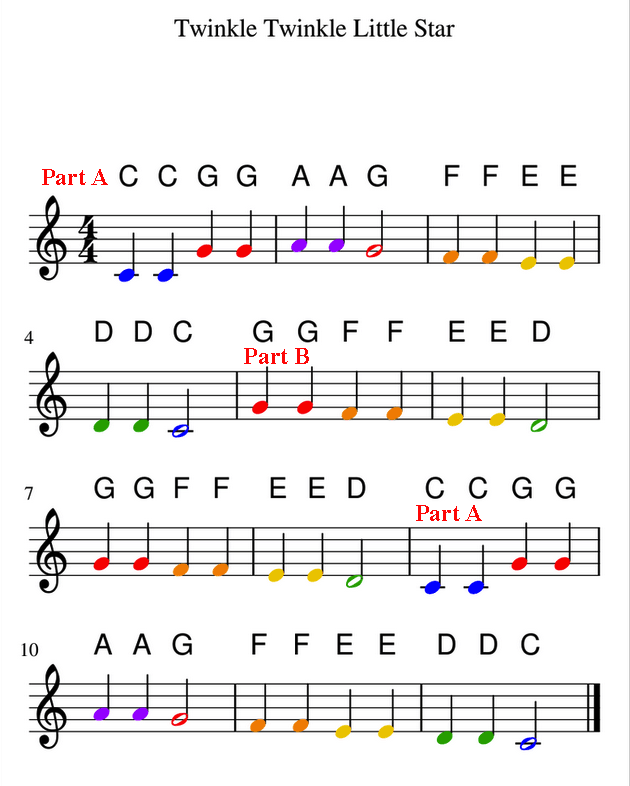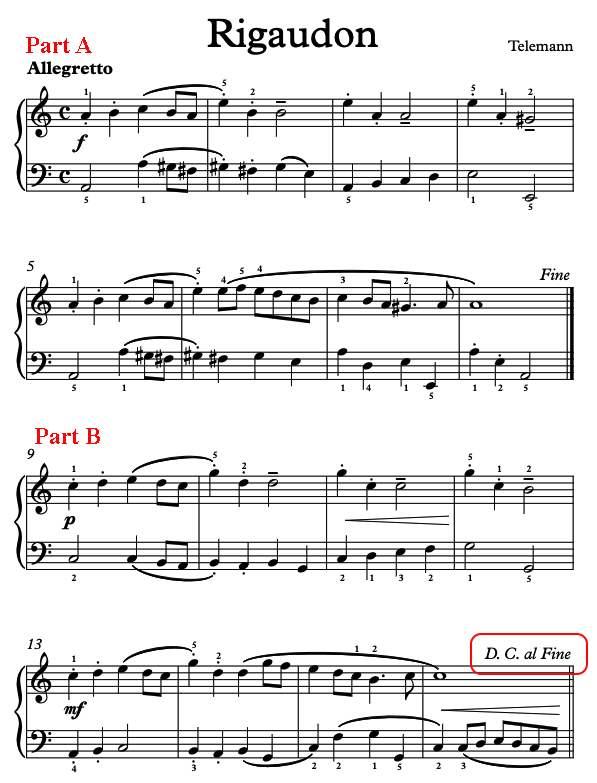
Kaii Lee had combined several piano/keyboard method books and her life long music learning books to create this sequential music theory study for this website. Throughout centuries, composers have been using forms to outline their music. The forms can be identified as Binary, Ternary, Dance Suites, Prelude and Fugue, Sonata, Rondo, Theme & Variation, and even the 12-Bar Blues. All songs use certain forms to organize the musical ideas, whether instrumental or vocal. This page is about the music form called Ternary. By clicking on the other colored links at the bottom of this page, the other music theory topics can be found easily.
For more information, please contact Kaii directly: info@kafm.net
The Ternary Form is one of the early music forms that composers have created in the 16th century of the Western music. Ternary means three portions. This type of music usually has only Part A and Part B. These two parts are related, but not the same. Usually, the portions of music are related by melodic or rhythmic ideas, sometimes both. After Part B is presented, Part A with its entirety would be repeated once again. Therefore, the Ternary Form is also called the "ABA Form."
One of the most famous songs in the world is called "Twinkle, Twinkle, Little Star" in English. More song titles have been created by using this melody, such as "Baa, Baa, Black Sheep." This song has three portions. With the first (M.1-4) and last (M. 9-12) portions being identical, only the second (M.5-8) portion has a different melodic line but using the same rhythmic pattern. The color-coded notation helps to identify the notes and pitches.
Here is another example of the Ternary Form. In this case the music is written like a Binary form, but a repeat, D.C. al Fine (From the Top to the Finish sign) is definitely necessary at the end to create that "ABA Form", or Ternary Form.
Telemann's "Rigaudon" has three portions, even though it looks like two portions only. With the repeat sign at the end of the page, it made the song another 8 measures longer; therefore, an "ABA Form."
"Rigaudon" by George Philipp Telemann
The next topic in this Music Theory site is all about "Dance Suites." Thank you for reading!
Music Theory that every musician could use and should know The Basics
Math in Music
More Math and Signs
Music Forms
Time Signatures Intervals Modulations Homophonic Style Polyphonic Style Diatonic & Chromatic Steps Transposition Contrapuntal Techniques Key Signatures Triads & Inversions Binary Form Primary Triads Augmented Sixth Chords Ternary Form Secondary Triads Traditional Compositional Tools Dance Suites Scales Seventh Chords Contemporary Compositional Tools Prelude & Fugue Secondary Dominant Musical Signs Sonata Form Cadences Rondo Form Modes Chord Progressions Musical Terms Theme & Variations Figured Bass & Basso Continuo Serialism
For more information, please contact Ms. Lee at: info@kafm.net
Home | Vocal Music | Piano Music | Music Theory | General Music | About
All rights reserved
Copyright © 2025 Kaii & Friends Music.net

